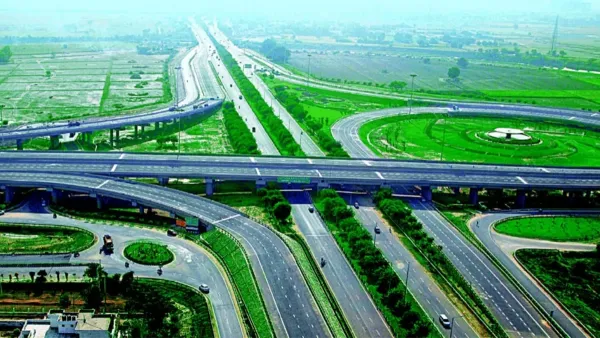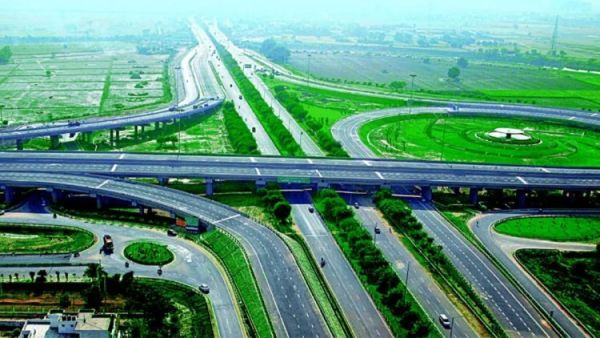
A six-lane elevated road that runs from the Okhla Barrage near Kalindi Kunj to the Yamuna Motorway with the Hindon-Yamuna doab will serve as the second motorway linking Noida and Greater Noida. The Uttar Pradesh Motorways Industrial Development Authority (UPEIDA) has been entrusted by the Uttar Pradesh government to carry out the riverfront bypass project.

An eight-lane ground-level route and a six-lane elevated corridor were the two suggested alignments for the new road that the Noida Authority had previously been debating. For travelers going from Delhi and Faridabad to the Noida International Airport, which is scheduled to open this year, the route is meant to provide direct access.
According to officials, the elevated route was a more practical choice because of the many illegal buildings and farmhouses on the Yamuna floodplains. They clarified that a ground-level road would not only run afoul of regulations but also run the danger of inciting further encroachments in this region that is prone to flooding.
“The capacity and legal criteria would not have been satisfied by a ground-level road. Therefore, the only practical answer is an elevated six-lane,” Lokesh M., CEO of the Noida Authority, told the media.
According to the updated alignment, a 75-meter-wide road between sectors 149A and 150 would link sectors 168. According to officials, the final draft plan will probably incorporate some design changes.
In order to include the National Highways Authority of India (NHAI), the Noida Authority first sought to declare the route a national highway, a strategy that eventually failed.
Manoj Kumar Singh, the board chairperson and chief secretary of Uttar Pradesh, proposed at the March 28 board meeting that the Yamuna Motorway, Noida, and Greater Noida authorities should work together to build the road if the NHAI proposal fails. Additionally, he gave the Noida Authority instructions to lead the project’s execution.
“After the irrigation department obtains a no-objection certificate, UPEIDA, a nodal agency renowned for constructing major motorways like the Purvanchal Motorway and the Lucknow-Agra Motorway, will construct the planned motorway. The three development agencies will split the project’s cost. The CEO said that a joint meeting to formalise the execution plan will be convened shortly.
The Noida Authority is anticipated to be responsible for the greatest portion of the project’s expenses since the bulk of the 30-kilometer elevated route is anticipated to pass through Noida. The riverfront bypass, which was created as a substitute for the 25-kilometer Noida Motorway, would be essential in controlling the increasing volume of traffic between Delhi and Noida, which is being fuelled by the fast growth of residential and commercial buildings as well as the future international airport.
At the moment, a single motorway connects Noida and Greater Noida, merging into the Yamuna Motorway at Zero Point. The goal of the new connection is to reduce traffic for cars heading to Agra, Lucknow, and other places from Delhi and Gurgaon. By reducing the amount of time that vehicles sit idle in traffic jams, officials think it will also help cut down on pollution.
In order to connect the new motorway with the Chilla Elevated Road, which is now under construction, the Noida Authority is also building a cloverleaf interchange close to the Mahamaya Flyover. This design, which is based on the cloverleaf interchange close to AIIMS in Delhi, will make it easier to move between the two lanes.
The six-lane, 5.9-kilometer Chill Elevated Road is intended to reduce traffic at the entrance of Noida. Vehicles travelling from Mayur Vihar and East Delhi would have direct access to the Noida Motorway once it is open. With the Yamuna and Lucknow motorways, the combined network would provide smooth travel between Delhi, Haryana, and key towns like Agra and Lucknow once it is merged with the new elevated corridor.